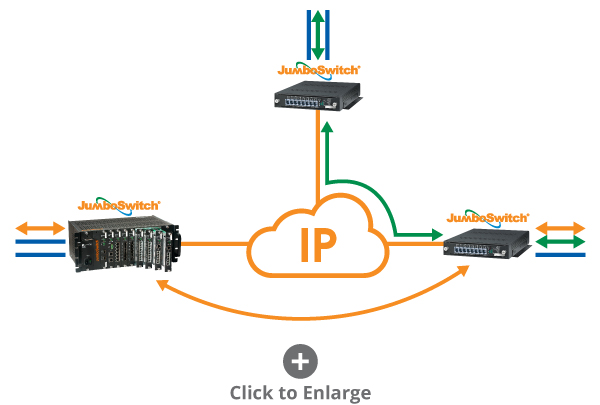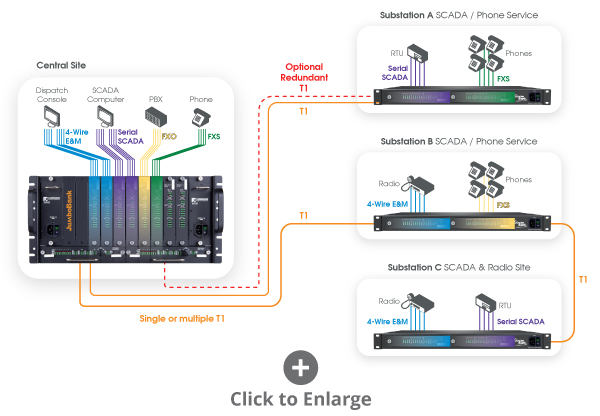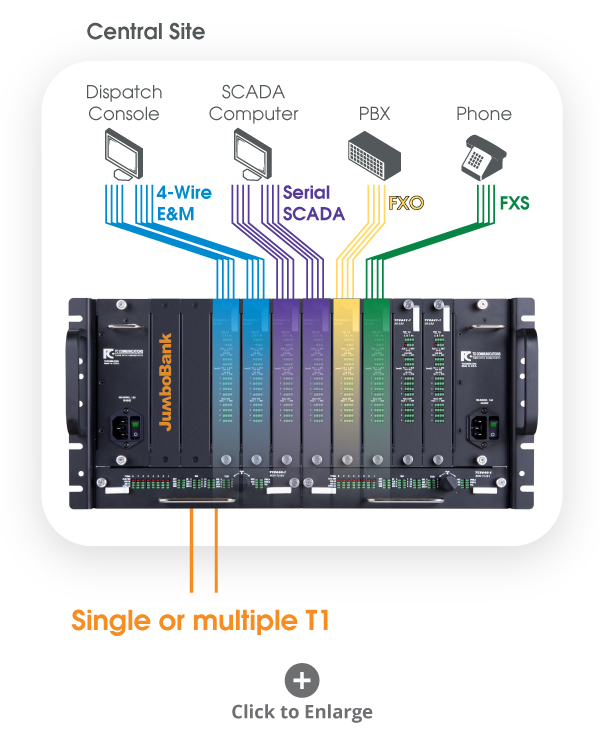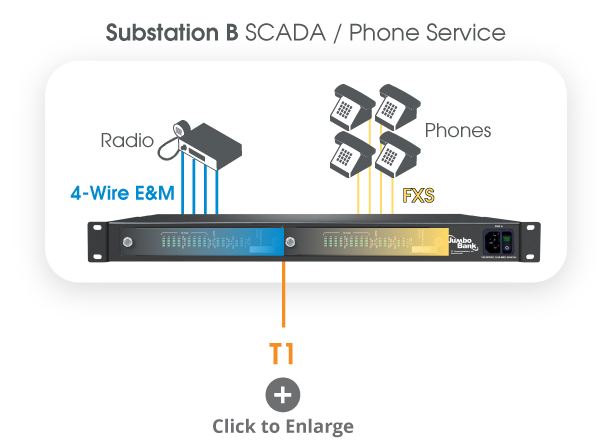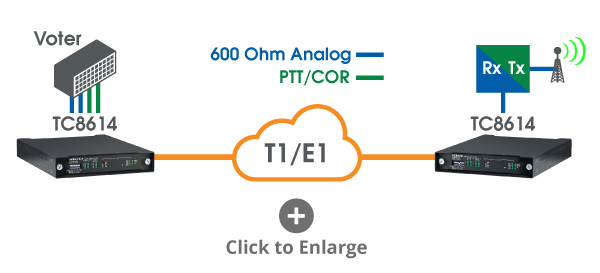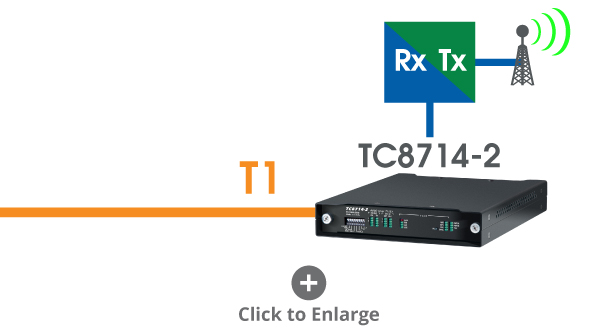After their invention in 1962 by Western Electric, for many years, channel banks were a widely popular telecommunications solution used in a variety of applications, including telephone and public safety radio networks. Over time, however, due to manufacturers exiting the market or discontinuing certain products or materials, channel banks increasingly become obsolete, leaving many users with non-supported products in their critical infrastructure.
TC Communications’ wide range of products for channel bank replacement makes it easy for customers to find a solution that meets their network and project scale needs. For those who want to modernize their networks, our JumboSwitch® replaces channel banks and migrates interfaces to an Ethernet/IP network. Conversely, our JumboBank™ and Mini Channel Bank products serve as like-for-like replacements, allowing customers to replace an interface to an existing channel bank and preserve devices on existing T1/E1 networks.
In this piece, we will overview TC Communications’ major interfaces for channel bank replacement, looking primarily at Ethernet/IP and T1/E1 transport methods.
Migrating to an Ethernet/IP Network Using JumboSwitch
Many customers wish to move their existing interfaces, which are on channel banks, to transport them over a new Ethernet network. For these customers, our flagship JumboSwitch is the right solution. Designed with mission-critical modern Ethernet networks in mind, JumboSwitch is an extremely flexible device with a variety of interfaces for modems, voice serial, dry contacts, teleprotection circuits, analog audio, and T1/E1s.


JumboSwitch Interfaces
- T1/E1
- T3/E3
- G.703/64K
- C37.94
- 4W E&M
- Serial
- Dry Contact
- Voice
- Modem
- and More
Customers can use the JumboSwitch as a single card with one to four interfaces on it, or in larger configurations in which multiple cards are placed into 1U, 2U, or 4U racks, providing a high degree of flexibility. All of the cards are hot-swappable and pluggable into the racks, and the interfaces can be intermingled.
The following diagram shows the JumboSwitch’s variety of rack mounting options:

The diagram below illustrates how JumboSwitch interfaces can connect and replace channel banks within a new IP network:
At three sites, each with interfaces connected, an interface signal is received at one site and can come out of another port at another site (orange arrow), depending on how it is configured.
Using IP addressing, interfaces at one site can easily be routed to a port at any other site in the network (green arrow). Ports on any card may be routed to any other similar card in the network for maximum flexibility.
Modernizing Interfaces on a T1/E1 Network Using JumboBank
For customers who do not wish to use Ethernet/IP and instead want to replace their obsolete channel banks with a modern alternative using their existing system, our JumboBank family of products can help them to achieve this.
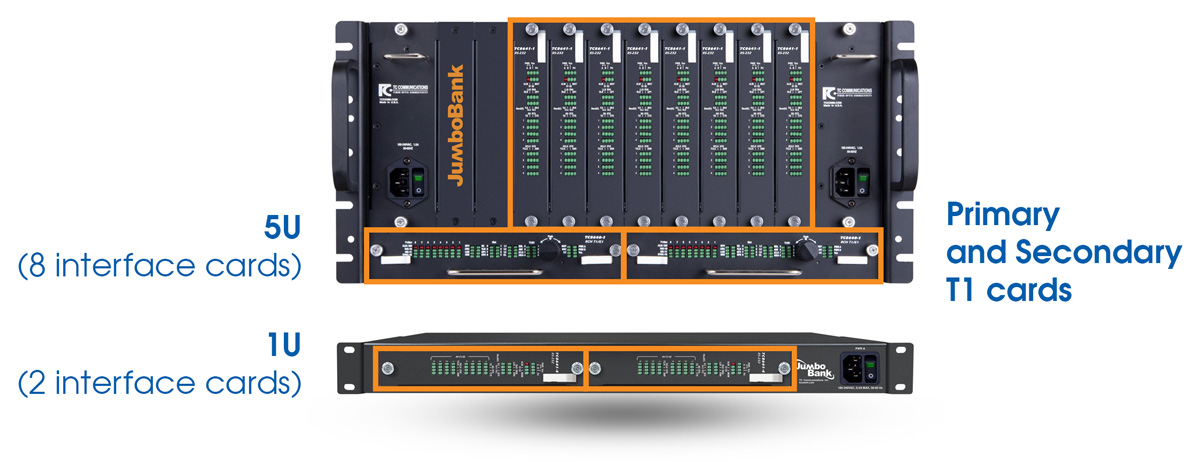
The JumboBank looks similar to the JumboSwitch, but rather than using Ethernet/IP, the communication mechanism between the cards is T1/E1. The JumboBank is available in a 1U or 5U configuration, as seen above. Our 5U rack can hold up to eight interface cards and two fully redundant T1 cards for primary and secondary T1 lines, while the 1U rack holds two interface cards. The following diagram illustrates how the JumboBank works:
At a central site with a JumboBank 5U rack in place, several devices are connected over two T1 lines (with options for single or multiple) to three remote sites, each set up with a 1U rack containing two interface cards.
From the central site, serial SCADA is routed to substations A and C (purple); four-wire E&M is routed to substations B and C (blue); and a phone card is routed to substations A and B (green and yellow).
T1 Redundancy and Solution Flexibility
As previously mentioned, the T1 is optionally redundant (indicated by the red dotted line). Within the 5U rack, there are primary and secondary T1 cards; if the primary T1 fails, the secondary T1 will continue without any disruption to the network.
The solution shown above is an example of what we call a “bookended” solution, given that there are equivalent JumboBank cards used at either end of the T1 line. However, much like classical channel banks, the JumboBank can also be used as a standalone, gateway solution by converting the interfaces directly to DS0 slots within the T1.
As such, the JumboBank can be used to replace a channel bank on one end while utilizing a customer’s existing equipment on the other end of a T1. This can be achieved using a 5U rack with up to eight cards, a 1U rack with two cards, or a single card, depending on customer needs.
Replacing a Channel Bank in Solutions with Few Channels Using Mini Channel Bank
Our third channel bank replacement option is to use a Mini Channel Bank. This product family is designed to be used in solutions with a low density of interfaces.
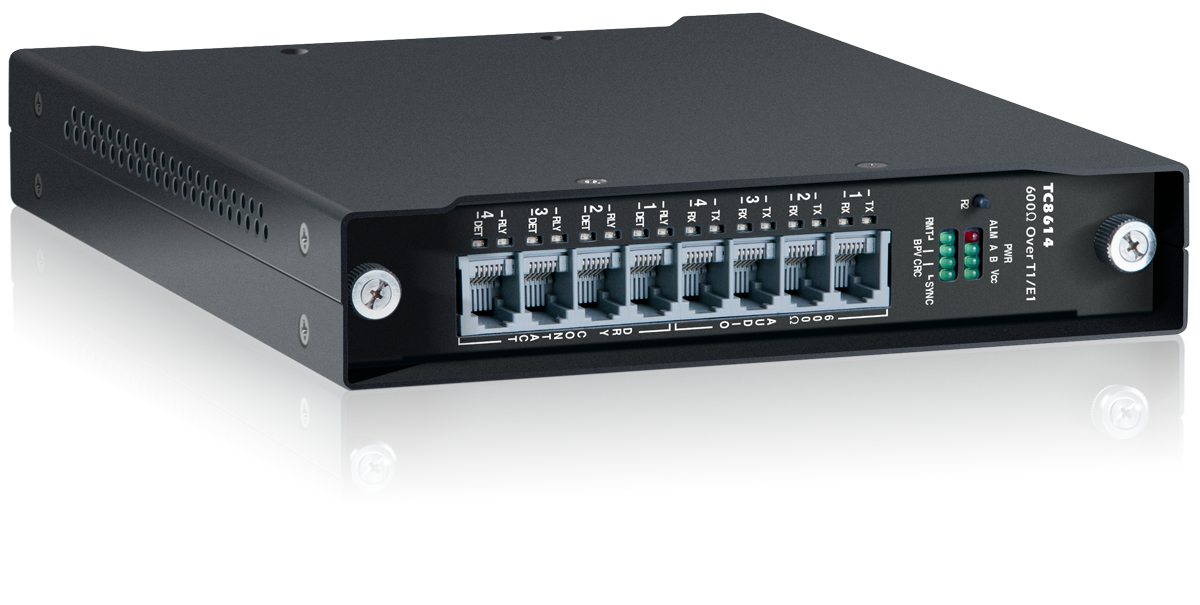
As shown here, the Mini Channel Bank is most often used as a standalone unit with one to four interfaces. Like the JumboBank, these interfaces communicate over T1/E1; the key difference between them is their size, with the Mini Channel Bank designed for single-card operation addressing an individual site, typically with one to four channels.
The following examples illustrate the Mini Channel Bank’s two modes of operation, one as a bookended solution, the other as a standalone solution:
Example 1
Here is a single-channel radio connected over T1 to a centrally located voter. This is a bookended solution with a unit at both ends (in this case, the units shown are the TC8614, a fourchannel, four-wire E&M unit).
Example 2
The Mini Channel Bank can also operate as a gateway channel bank, taking the four-wire E&M from the radio and simply putting it onto the T1. This is not a bookended solution, requiring only one unit (the TC8714-2 being shown here).
Product Features
All three of the product families discussed (JumboSwitch, JumboBank, and Mini Channel Bank) have redundant power operation for mission-critical requirements. Every product is in a fully solid state with no moving parts. The cards for the JumboSwitch and JumboBank are all hotswappable and pre-configured, meaning that if an individual card is taken out for inspection (such as in the case of a failure) the other cards will not be disturbed, and the system will remain operational.
As with all TC Communications products, the products in these product series boast an extended temperature range of -40°C to 80°C for operation in extreme environments.
Conclusion
TC Communications’ wide selection of products and interfaces make it easy for customers to find replacement channel bank solutions in one place. Whether customers want to migrate devices to new IP networks or replace outdated channel banks with modern interfaces on an existing T1/E1 network, our interfaces are designed to meet customers’ various project requirements.
To learn more about our impressive product line, please view our Interactive Product Matrix. The left column displays our JumboSwitch interfaces, and the center column lists our JumboBank and Mini Channel Bank interfaces.
Interested in similar content? Subscribe to our mailing list.
